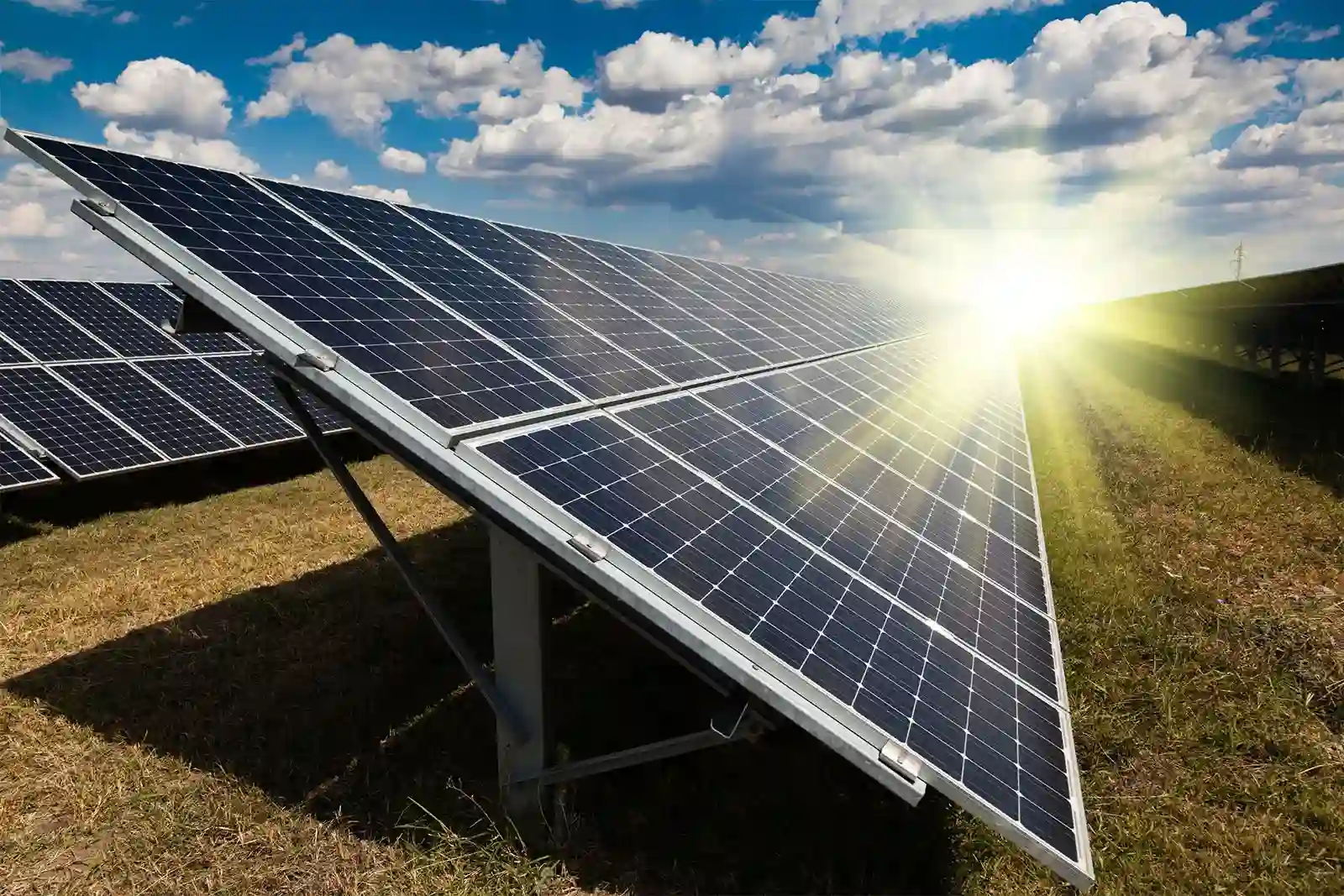Solar panels are an excellent long-term investment, but like any technology, they require occasional monitoring to ensure optimal performance. Knowing whether your system is working efficiently can save you from higher utility bills and prevent small issues from turning into costly repairs.
By identifying problems early, such as faulty inverters, shading issues, or unexpected drops in energy production, you can maximize your system’s output and protect your investment.
You can tell if your solar panels are working by checking your inverter, monitoring app, electric meter, and electricity bill for consistent production and reduced grid usage.
Check Your Solar Inverter
The solar inverter is the heart of your solar system. It converts the direct current (DC) produced by your solar panels into the alternating current (AC) your home appliances use. If your inverter isn’t working correctly, your entire solar system can appear offline even if the panels themselves are fine.
Indicator Lights:
Most inverters have LED lights that display system status.
- Green = Operating normally
- Orange/Yellow = Potential issue
- Flashing Red = Error or system fault
Error Codes:
Modern inverters may display error codes on a screen or send alerts through a connected app. Check your manual or online documentation for what the codes mean.
Use a Solar Monitoring App or Portal
Most modern solar systems come with a dedicated monitoring app or web portal provided by your installer or inverter manufacturer. These tools give you real-time insights into how much electricity your panels are producing.
What You Can See
- Live Production Data:
See how many kilowatt-hours (kWh) your panels are generating right now and throughout the day.
- Historical Performance:
Compare today’s output with yesterday’s or the same day last week. This helps identify dips in performance that may signal a problem.
Signs Your Panels Aren’t Working Properly
- Daily production shows 0 kWh despite sunny weather.
- A sudden drop in power output without any weather-related reason.
- The app shows error messages or a “not reporting” status.
Examine Your Electric or Net Meter
Your electric or net meter is another clear indicator of whether your solar panels are working. When your solar system is generating electricity, it should either slow down your meter’s forward movement or make it spin backward (if net metering is available in your area).
How to Read the Meter
- Analog Meter (with spinning dial):
On sunny days, if you’re producing more energy than you’re using, the dial may spin backward a good sign that your solar panels are feeding energy into the grid.
- Digital Net Meter:
Look for a symbol or message like “reverse” or “export.” This means your system is pushing excess power back to the utility grid.
What to Watch Out For
- The meter is still running forward at full speed on a sunny day, which could mean solar energy isn’t being generated.
- No signs of export or reverse flow, your panels might not be producing enough power or any at all.
Review Your Electricity Bill
One of the easiest ways to tell if your solar panels are working properly is by reviewing your electricity bill. Over time, you should see a noticeable reduction in your monthly utility charges compared to your pre-solar bills.
- Compare Past and Current Bills:
If your recent bills are just as high (or higher) than before going solar, it might be a sign your system isn’t functioning efficiently or at all. - Look for “Net Metering” Credits:
If your utility offers net metering, you should see credits for kWh exported to the grid. No credits? That may indicate your system isn’t producing enough excess power.
Sudden Bill Spikes Could Mean:
- Your system has a fault or performance issue.
- There was unusually bad weather (less sun = less solar energy).
- Your energy usage increased unexpectedly (e.g., new appliances, guests at home).
Consider Weather Conditions
The amount of electricity your solar panels generate is highly influenced by the weather. While solar panels can still produce energy on cloudy or rainy days, their efficiency is optimized on clear, sunny days. Understanding how weather impacts your system’s performance can help you identify potential issues.
- Sunny vs. Cloudy Days:
On bright, sunny days, your solar system should generate the most electricity. However, on cloudy days, your panels will produce significantly less energy, though they should still contribute some. - Seasonal Changes:
During the winter months, shorter days and lower sun angles often result in reduced energy production. This doesn’t necessarily mean your system isn’t working; it’s simply a natural part of the seasonal cycle. - Historical Weather Data:
To assess if your solar system is underperforming, compare current weather conditions with past years’ data. Many solar monitoring apps allow you to review historical production, helping you spot any unusual dips in performance.
Inspect for Shading or Obstructions
Shading or physical obstructions can drastically reduce the efficiency of your solar panels. Solar panels rely on direct sunlight to generate electricity, so anything blocking sunlight, from tree branches to dirt buildup, can lower their output. Regularly inspecting your panels for potential obstructions is a crucial part of maintaining optimal performance.
- Tree Branches:
Overhanging branches are a common cause of shading. As they grow, they can block sunlight and reduce your solar panels’ efficiency. Regularly trimming the surrounding trees can prevent this. - Dirt, Dust, and Bird Droppings:
Panels can accumulate dirt, dust, and even bird droppings over time, especially if you live in a dusty or urban area. This buildup can block sunlight from reaching the panels, reducing energy production. - Debris:
Leaves, branches, or other debris can accumulate on the panels, particularly after storms. Check for any such buildup and clean it off regularly to maintain panel efficiency. - Physical Damage:
Look for visible signs of damage, such as broken glass or loose wiring, which could affect your system’s performance. Damaged panels should be addressed immediately by a professional.
Perform a Basic System Check
Sometimes, a minor issue can affect your solar panels’ performance, and addressing these simple problems early can save you from costly repairs down the road. Performing a basic system check can help you identify small issues before they become major problems.
Here’s what to check during a basic system check:
- Circuit Breakers or Fuse Box: One of the first things to check is your circuit breakers or fuse box. If there’s an electrical issue, the breaker connected to your solar panel system might have tripped. If this happens, simply reset the breaker to restore power to your system.
- Restarting the Inverter: Inverters, like any other electronic device, can occasionally experience minor glitches. Restarting the inverter is a simple fix that can resolve many minor performance issues. To do this, switch off the inverter, wait for about 10 seconds, and then turn it back on. If the inverter is still malfunctioning after a reset, it may require professional servicing.
- Check for Loose Wiring: Inspect the wiring and connections to ensure nothing is loose or damaged. Over time, connections may weaken, or wires may become loose due to exposure to weather conditions. Tightening or repairing these connections can improve your system’s performance.
- When to Call a Professional: If the basic checks don’t resolve the issue, or if you’re not comfortable performing these tasks yourself, it’s time to call a qualified solar technician. They can inspect your system in greater detail, ensuring that everything is functioning properly and addressing any underlying issues that may not be immediately visible.
What To Do If Solar Panels Still Aren’t Working
If you’ve gone through the basic checks and your solar panels are still not working as expected, it’s time to take further action. Solar systems are complex, and issues can sometimes be more serious than a simple circuit breaker tripping or a dirty panel. Here’s what you should do next:
Contact Your Installer
If your solar system is still under warranty, contacting the installer is the first step. The company that installed your system should provide customer support or troubleshooting assistance, and they may be able to fix the issue at no cost if it’s covered under the warranty.
What If the Installer Is Out of Business?
Unfortunately, some installers go out of business or no longer offer services. If that’s the case, you’ll need to find another solar provider to assist you. Look for a trusted local solar repair company or service provider who can work with your system.
Consider Third-Party Solar Repair Services
If you can’t reach your original installer or if they’re out of business, there are several reputable third-party solar repair services available. These professionals are trained to handle all types of solar systems and can troubleshoot and repair issues. Companies like Sunterjee offer services even for systems they didn’t install, making it easier to find support when needed.
Solar Warranty & Insurance
If the issue is related to equipment failure, such as malfunctioning inverters or damaged panels, check if your system is still under warranty. Many manufacturers offer long-term warranties for the panels and inverters, typically ranging from 10 to 25 years. Insurance policies may also help cover repair or replacement costs.
Schedule Professional Inspection
For more serious issues, like damaged panels or components, it’s best to schedule a professional inspection. A trained solar technician will assess your system, check each part, and perform any necessary repairs. They will also test the output to make sure your system is generating optimal energy.
Maintenance Tips to Keep Your Panels Performing
To ensure your solar panels are always working at their peak efficiency, regular maintenance and care are essential. Here are some maintenance tips that can extend the lifespan of your system and help maintain optimal performance:
- Regular Inspections
- Clean Your Panels
- Annual Technician Checkups
- Trim Overhanging Trees or Shrubs
- Monitor System Performance
- Check for Snow or Ice Buildup
FAQs Section
1. Do solar panels work on cloudy days?
Yes, solar panels will still generate electricity on cloudy days, though at a reduced rate. They rely on diffuse sunlight, which can penetrate through clouds. While clear, sunny days produce the most energy, solar panels can still generate power in overcast or cloudy weather, just less efficiently.
2. Can solar panels stop working suddenly?
While it’s rare, solar panels can stop working suddenly due to issues like electrical faults, damage, or equipment failures. Problems can also arise from issues with the inverter, wiring, or other components. If you notice a significant drop in energy production, it’s important to troubleshoot or contact a professional.
3. What are the signs that my solar panels aren’t working properly?
Common signs include
- Your monitoring app shows zero production on sunny days.
- Your inverter displays a red light or error message.
- Your electricity bill suddenly increases without a change in usage.
- Your electric meter shows no signs of energy export to the grid.

Sneha Shah is the owner and driving force behind transformative solar solutions for homes and businesses. With 15+ years in biotech and a strong foundation in project management and sustainability, she bridges technical expertise with market insight. Sneha is also a mentor and clean energy advocate, passionate about expanding solar access to underserved communities.

